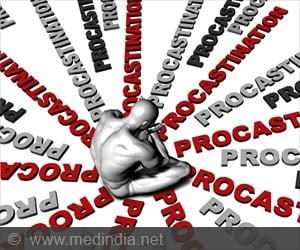On the congested Indian streets outside, drivers are less enthusiastic despite the excitement about India's growing car sales which is palpable at this year's Delhi auto show...
On the congested Indian streets outside, drivers are less enthusiastic despite the excitement about India's growing car sales which is palpable at this year's Delhi auto show... about the prospect of more traffic on the roads.
Venkatraman, 46, has about a 25-kilometre (15-mile) commute to work every day from his home in a New Delhi suburb to the international airport where he works for the cargo service unit of a major airline.It already takes 45 minutes to an hour, even when he uses a brand new stretch of eight-lane expressway, and the idea of more cars adding to the tailbacks fills him with dread.
"Of late, the traffic has been going from bad to worse because of so many cars being introduced," he told AFP. "It's definitely got worse since I started driving 12 years ago."
He says he would gladly leave his white SX4 from India's most popular carmaker Maruti at home.
"If I had connectivity on public transport which was comfortable and convenient I would definitely take it," he said.
The slogan for the auto event in the Indian capital is "Mobility for All," but the increase in cars in a country with notoriously limited infrastructure could turn driving into an even slower, more frustrating crawl.
Advertisement
Inside AutoExpo, which runs until next Tuesday, foreign and domestic manufacturers spoke excitedly about the potential for growth in a country with a billion-plus population and less than 10 cars per 1,000 people.
Advertisement
So where will they go when existing roads appear already past saturation point, particularly in the big metropolitan areas of New Delhi, commercial capital Mumbai and IT hub Bangalore?
Is the daily deadlock outside AutoExpo a vision of the future?
The answer has consequences not only for manufacturers of small cars, which account for 80 percent of all auto sales in India, but also the foreign high-end producers such as Audi or BMW who are eyeing the market.
The man tasked with finding a solution to these problems is government veteran Kamal Nath, the ambitious roads minister.
"The biggest deficit we have today is our infrastructure deficit and at the heart of our infrastructure deficit is roads," he said as he inaugurated the auto show on Wednesday.
India has a 500-billion-dollar plan to upgrade its infrastructure and Nath has been on a world tour recently looking for private investment to help him achieve a target of 7,000 kilometres of new road per year.
The current rate of building is about 9.0 kilometres a day, short of the required 20 kilometres a day to meet the building target, but up from the 2.0 kilometres a day when Nath took office last May, he said.
India already has the second-largest road network in the world, measuring 3.5 million kilometres but only 47 percent is paved and only a third of all maintenance needs are met, the World Bank says.
Journey speeds even on the country's highways -- the vast majority of which are two-lanes -- can be frustratingly slow at about 50 kilometres an hour in a car and 35-40 kilometres for buses and trucks.
This is a significant constraint on economic development in a country where 65 percent of all freight travels by road, according to World Bank figures.
Pankaj Sharma, from the Delhi-based think-tank the Center for Transforming India, says building new roads is only part of the solution to congestion.
"The pace of infrastructure growth in India is not matching the growth in vehicle ownership, so traffic conditions are bound to get worse," he said
"But the building up of infrastructure is only a temporary solution. They are doing nothing to reduce the traffic on the road."
To cut congestion, convenient and affordable public transport systems are needed that give commuters an alternative, he says, underlining that India's urban population is forecast to soar.
For the industry, the focus remains on working with the government to encourage rapid road building for the shiny models on display at the AutoExpo.
"It'd be good if there were shiny new roads for them to drive on," the head of GM India, Karl Slym, said.
Source-AFP
TRI














